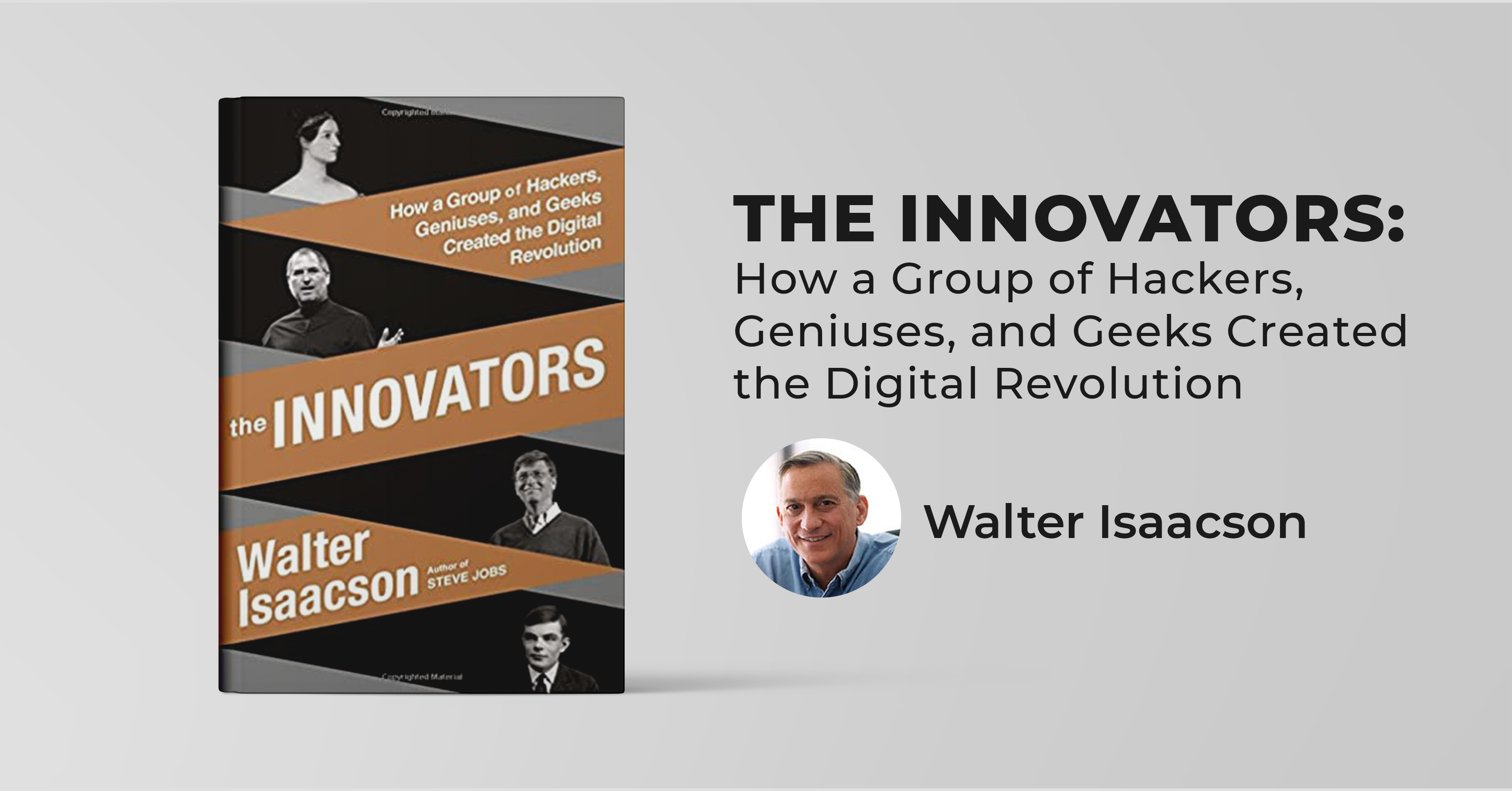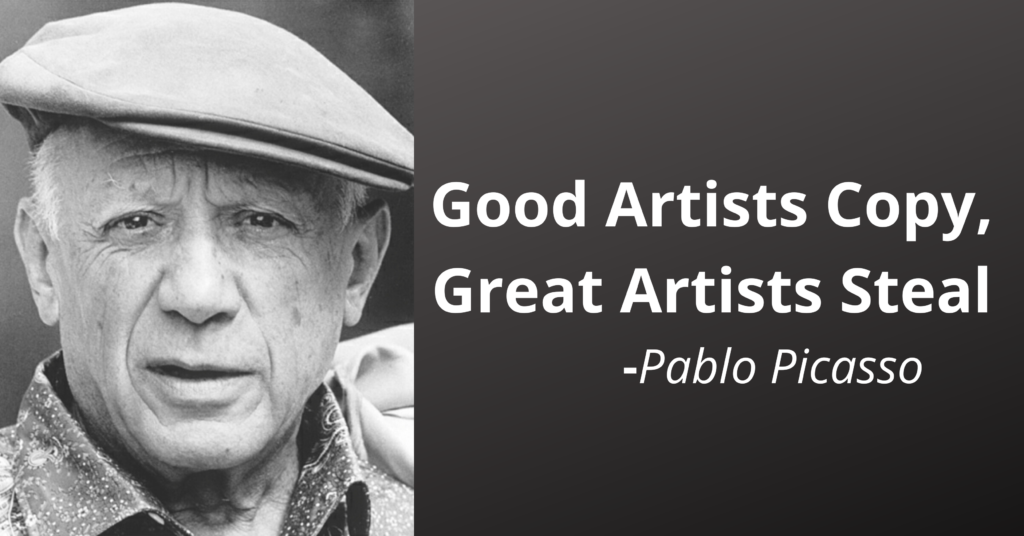The Innovators – Walter Isaacson
Thanks to Ryan Van Hoozer. When I was chatting with Ryan, he talked about the Innovators by Walter Isaacson. I decided to give it a read and am thankful that I read it.
Walter writes,
‘Great ideas are a result of ideas that flow from a large number of sources. If one is able to draw ideas from multiple sources, it leads to innovation and invention’.
The history behind the digital revolution: This book, The Innovators by Walter Isaacson is about who and what created the digital revolution we live in today. As you open the book, you will see the timeline of events starting from 1843 (Ada, Countess of Lovelace publishes notes on Babbage’s Analytical Engine) to 2011 (IBM’s Computer Watson wins Jeopardy) that led to the digital revolution. You get to learn about different scientists who have contributed to the betterment of our lives. You also get to see their personal side of the story where most of them have also been rebels in their own way. Walter also says that the ecosystem you live in contributes a lot to inventions. (Walter Brattain, John Bardeen, and William Shockley, the inventors of the transistor, all worked at Bell Labs).
Who Invented the Computer? This is an interesting debate, and you can find some of my learnings from the book documented here.
Transistor
The transistor is an important invention in history. According to Wikipedia, the transistor is one of the basic building blocks of modern electronics. It is a very important invention that paved the way for the future (and a lot of advances we enjoy today).
Who Invented the Transistor?
Walter Brattain, John Bardeen, and William Shockley. These are the names behind the invention of the transistor. They also won the Nobel Prize in 1956 for their invention. A key player in this whole invention is ‘Bell Labs’, where Walter Brattain, John Bardeen, and William Shockley worked together. The company they worked for (Bell Labs) paved the way for this great invention.

Pat E Haggerty: Pat Haggerty is the Co-Founder of Texas Instruments. Transistors were being sold in 1954 for $16 a piece. However, Haggerty wanted to break the consumer market and created ways to sell it for $3 a piece. Haggerty understood the need to create new markets instead of chasing old ones. A personal device radio was created. Pat Haggerty was able to take what was built and create a new market.
Palo Alto: Walter Brattain & John Bardeen did not like working for William Shockley. Shockley was able to attract great talent because of his aura. However, he could not retain them. William Shockley left Bell Labs and founded Shockley Semiconductor with the help of Los Angeles businessman Arnold Beckman. Beckman wanted the company to be based in Los Angeles, CA. However, Shockley insisted the company be based in Palo Alto, CA. This is the time Fred Terman became the Dean of Engineering at Stanford and was building the Industrial park in Stanford on seven hundred acres. Terman persuaded Hewlett and Packard (who had been Terman’s Students) to stay in Palo Alto. Fred Terman also offered incentives for Shockley to set up his company in Palo Alto.
Robert Noyce and Gordon Moore: Shockley recruited Robert Noyce and Gordon Moore (the best semiconductor engineers in the country) to work at Shockley Semiconductor. In 1957 they left and formed Fairchild Semiconductor. Shockley could not retain the talent. Gordon Moore published a paper titled ‘Cramming more components onto Integrated Circuits’. – The number of transistors in a dense integrated circuit (IC) doubles about every two years. (This became Moore’s Law).
NM Electronics to Intel: Arthur Rock helped fund NM Electronics (Noyce and Moore), which later became Intel. Andy Grove helped run the Intel ship, which spurred a lot of innovations.
Internet: Vint Cerf, who is recognized as one of the ‘Fathers of the Internet and the co-inventor of TCP/IP Protocols, along with Bob Kahn. Vint Cerf now works for Google. Cerf is hearing impaired and used hearing aids at age thirteen. Government Policies also paved the way for the widespread use of the Internet. Al Gore, the former Vice President, deserves a lot of credit for his Government Policies and the role he played.
Bill Gates & Steve Jobs: Bill Gates’ business and legal skills are also talked about. Bill can be credited with creating a market for the software industry. He predicted that the money is in the software and ensured he created a market for it rather than giving it away for free. Steve Wozniak (Co-Founder of Apple) could have been relegated to minor mentions in newsletters had Jobs not insisted that they create a company to commercialize inventions. This is something Larry Page (Co-Founder of Google) believed in. He was one of the key reasons for converting a Stanford Research paper to Google. He wanted to commercialize inventions. Dan Bricklin, who conceived the first financial spreadsheet program VisiCalc is also discussed in the book.
Good Artists Copy, Great Artists Steal: Many of Xerox PARC’s innovations, such as the graphical user interface, a mouse, and document-centric computing, were copied by Steve’s Apple. When Steve Jobs was challenged about this, he quoted Pablo Picasso’s Good Artists Copy and Great Artists Steal’. He added that they have always been shameless about stealing great ideas. The key is execution and also commercialization, so everyone benefits from the idea.
Towards the end of the book, the contributions of Jimmy Wales (Wikipedia-Greatest Collaborative Knowledge Project in history), Ev Willams (Blogger, now Twitter and Medium), Sergey Brin, and Larry Page are discussed. Larry Page had read about Tesla, who was one of the greatest inventors, however, felt sad for him as he could not commercialize his inventions. He wanted to be more like Edison, who not only invented but also commercialized his inventions. Larry had the habit of simply not talking or talking very less because of a chronic vocal cord problem. Larry Page and Sergey Brin complemented each other well.
Walter writes ‘Creativity is a collaborative process. Innovation comes from teams more often than from the light bulb moments of lone geniuses.
Thanks, Walter Isaacson, for your extensive research and for writing a great book.





Leave a Reply